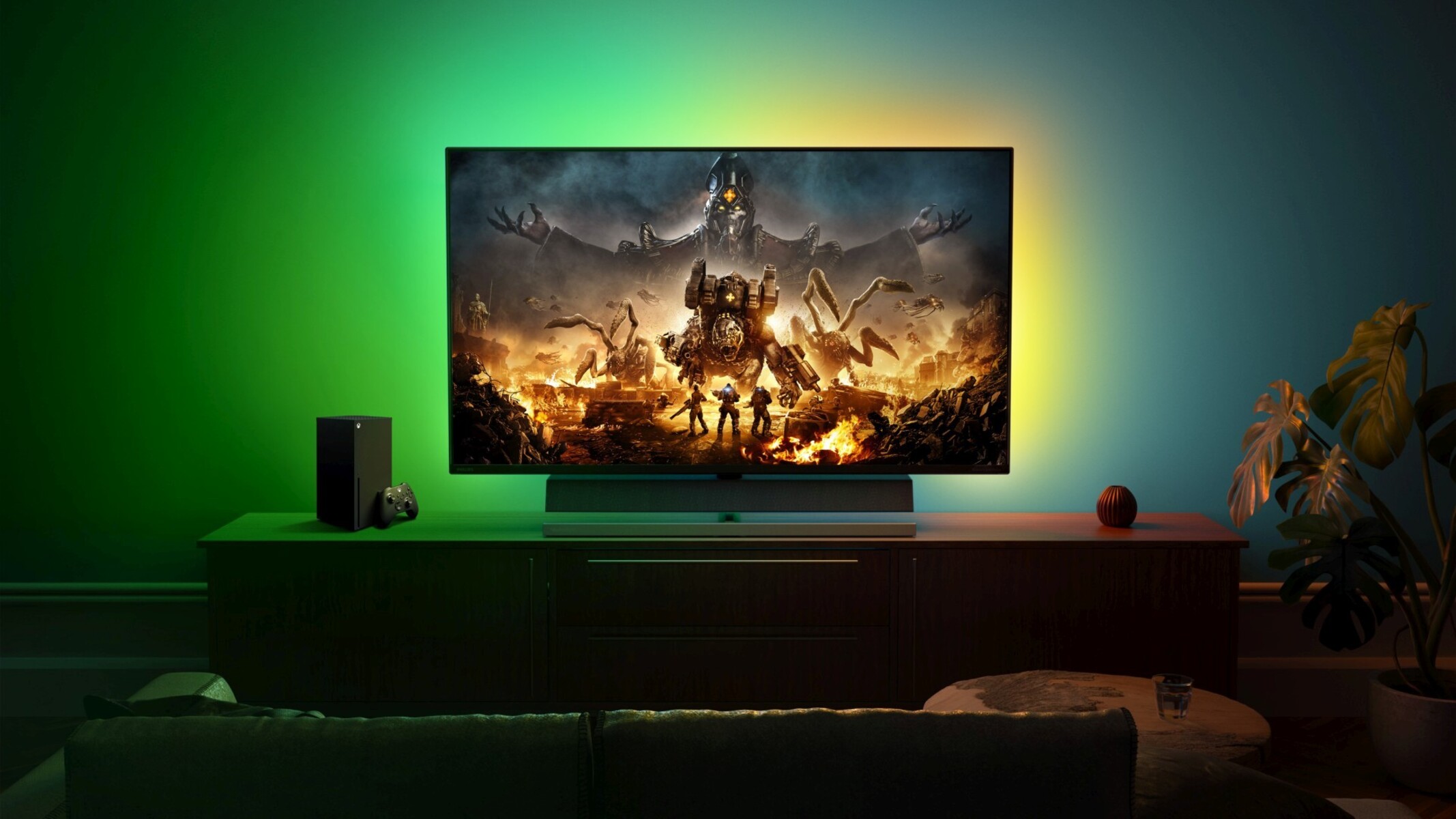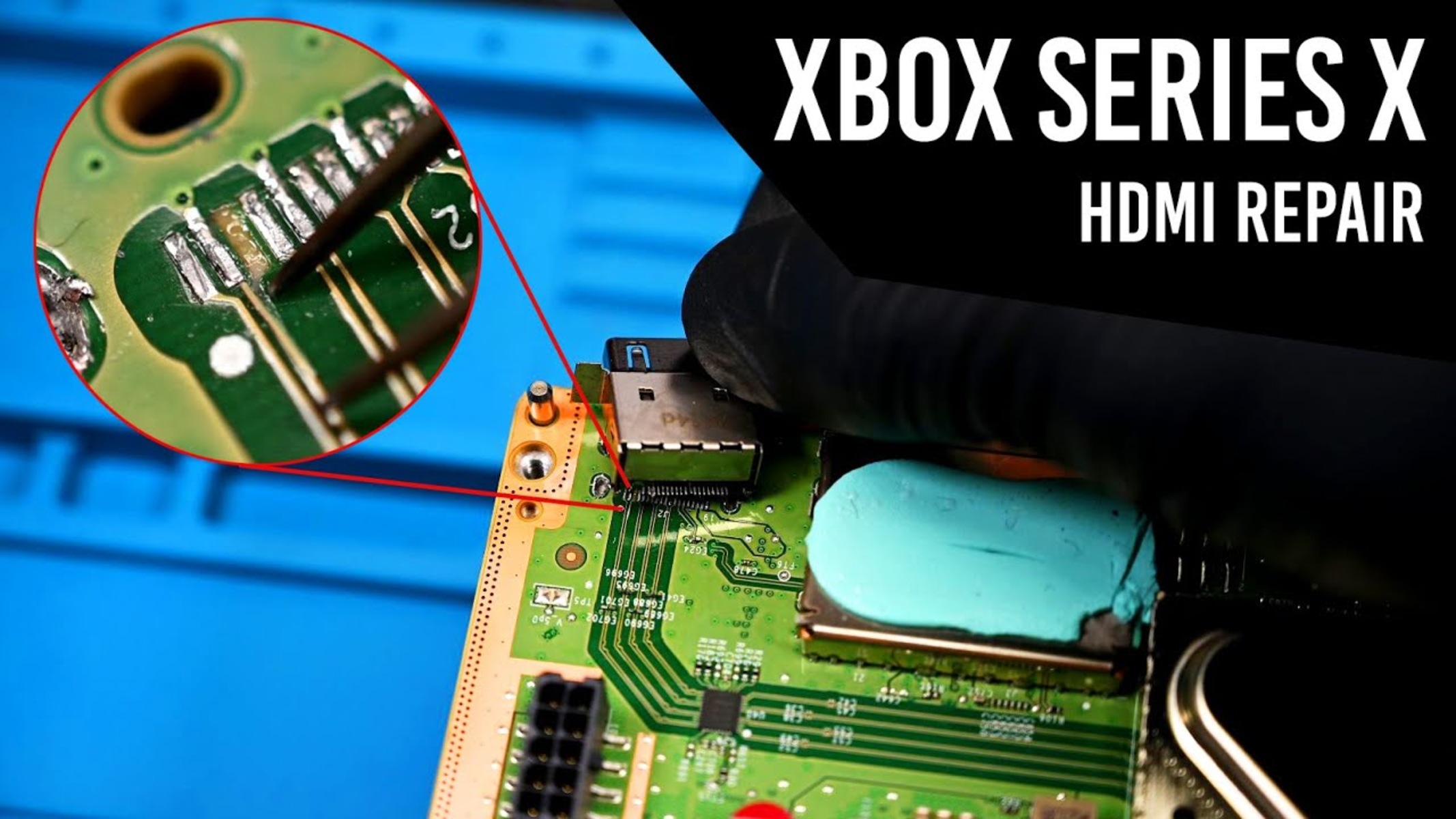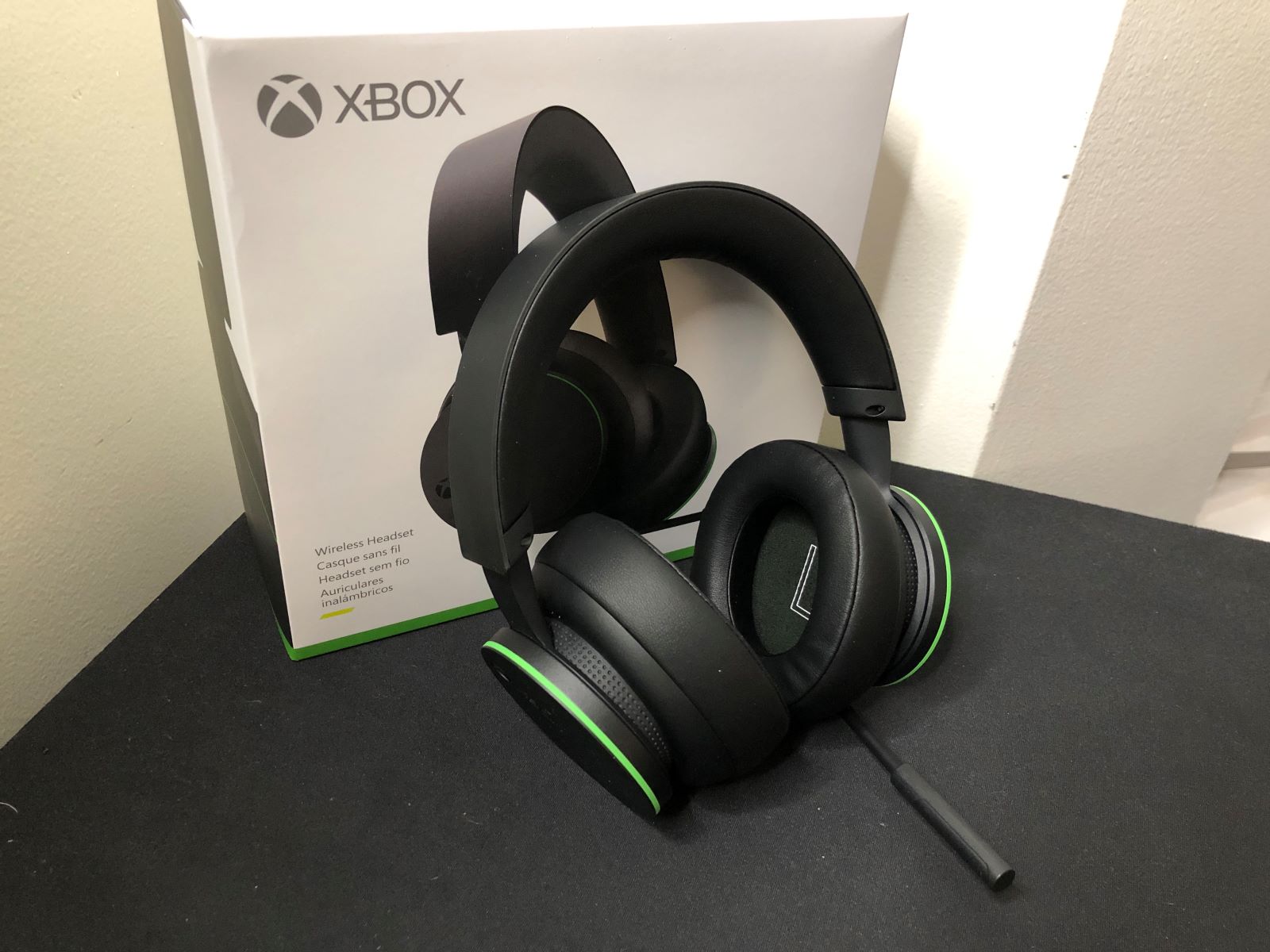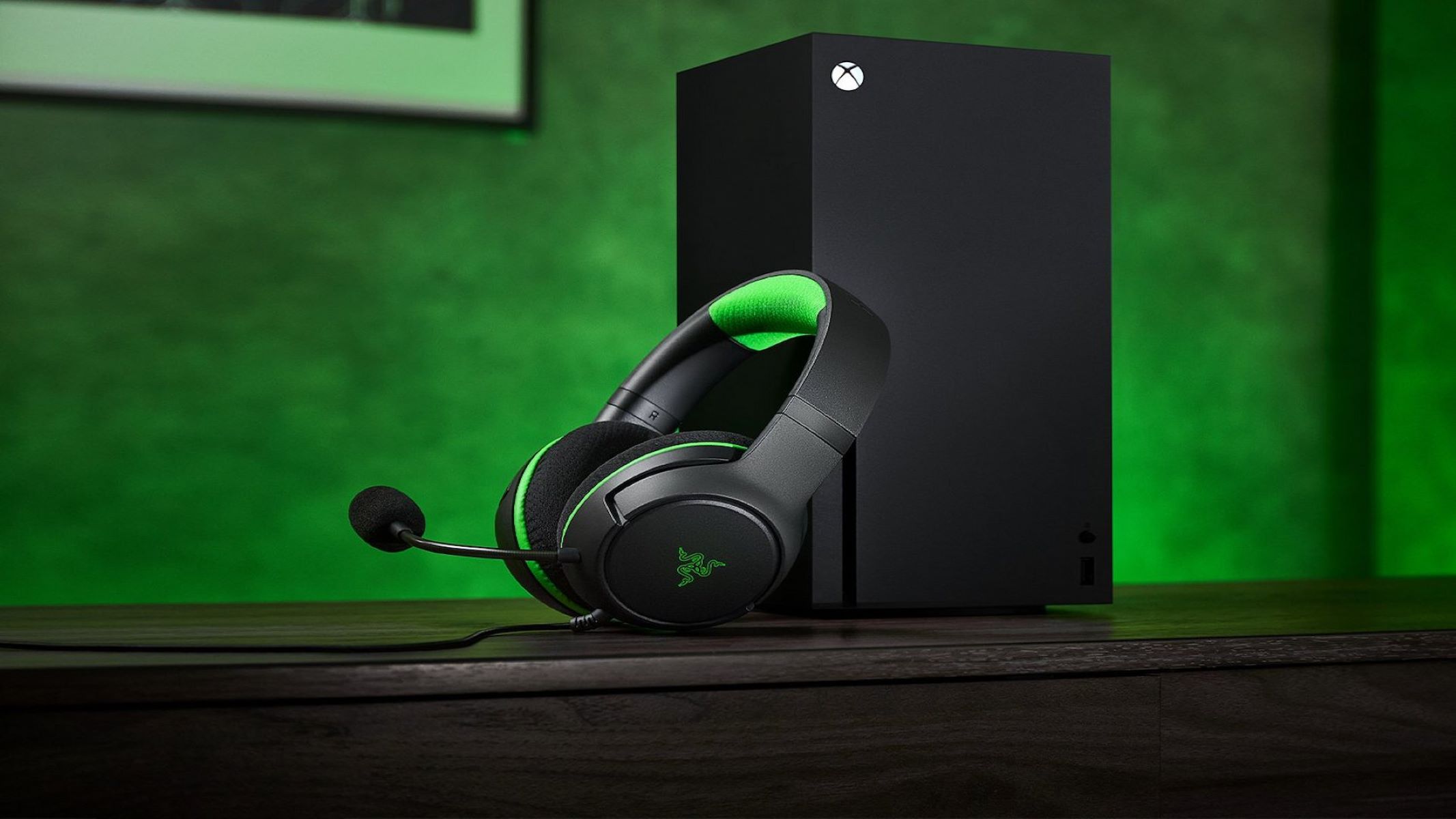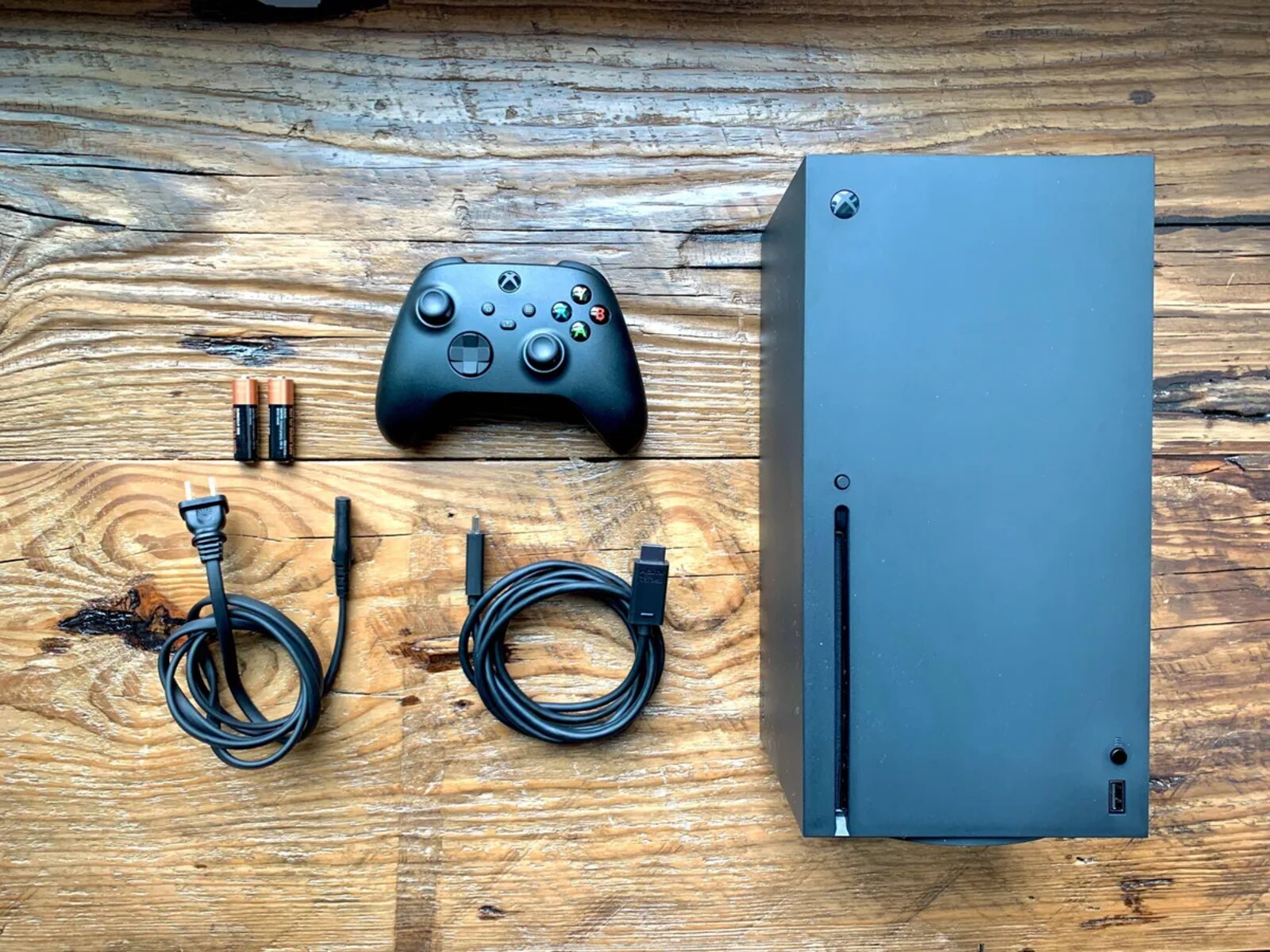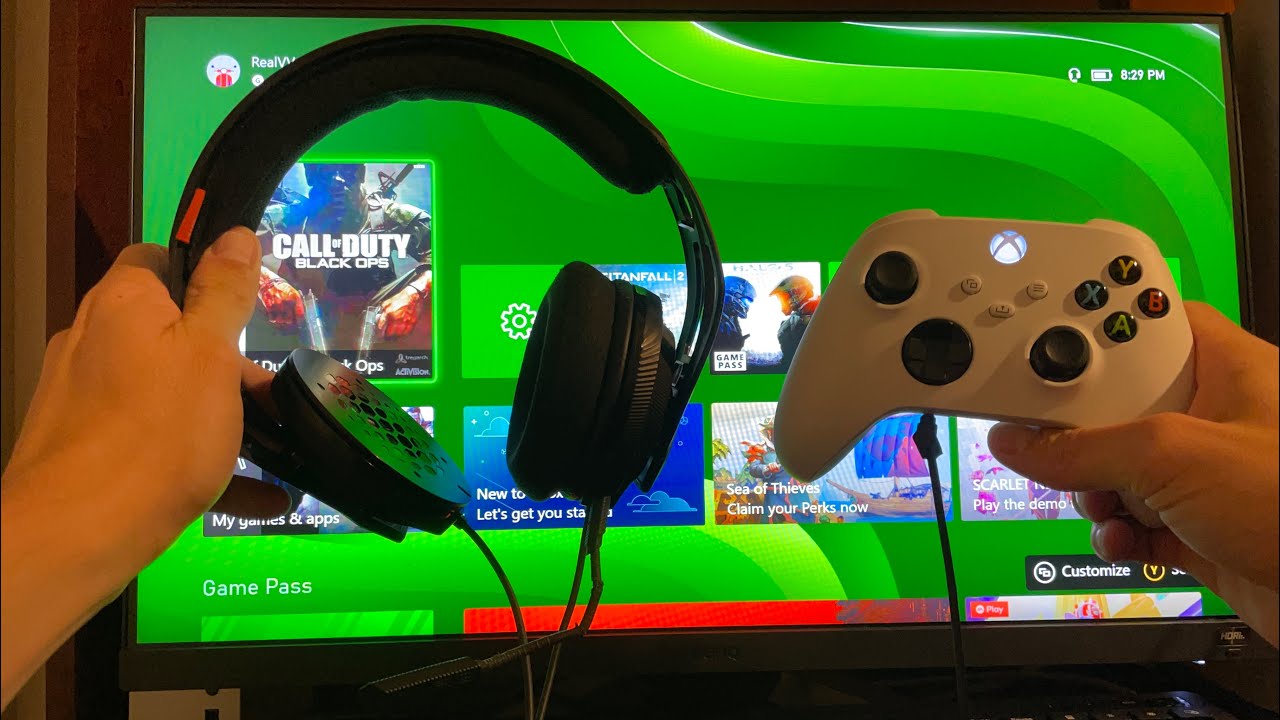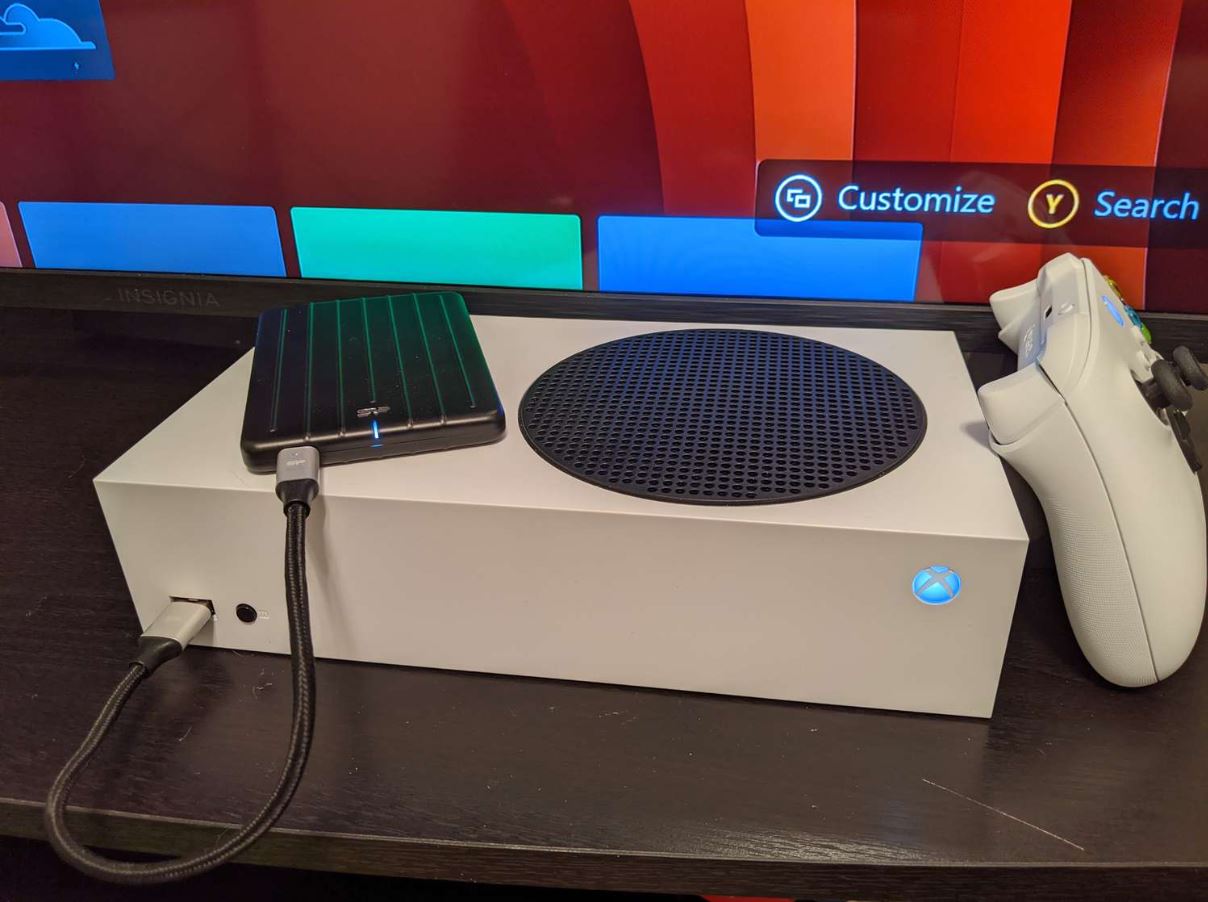Introduction
Choosing the right gaming monitor is crucial for an optimal gaming experience, especially when it comes to the Xbox Series X. With its powerful hardware capabilities, the Xbox Series X deserves a monitor that can truly showcase its potential. Whether you’re a casual gamer or an esports enthusiast, finding a monitor that meets your specific requirements is essential.
When shopping for a gaming monitor for your Xbox Series X, several factors need to be considered. From screen resolution and refresh rate to response time and panel type, each element plays a vital role in delivering smooth gameplay and stunning visuals. Additionally, connectivity options, size, and aspect ratio are important aspects to consider when making a purchasing decision.
To help you make an informed choice, this article will guide you through the key factors to consider when looking for a gaming monitor for your Xbox Series X. By understanding these factors, you can choose a monitor that provides immersive gameplay, remarkable visuals, and a competitive edge.
However, it’s important to note that the “perfect” gaming monitor for the Xbox Series X will vary depending on individual preferences and gaming needs. While some gamers prioritize resolution and visual fidelity, others may prioritize speed and responsiveness. Finding the right balance between these factors will ensure an optimal gaming experience tailored to your preferences.
Let’s delve into the different factors to consider when selecting a gaming monitor for your Xbox Series X, ensuring that you find the perfect match for your gaming needs.
Screen Resolution
When it comes to screen resolution, the Xbox Series X supports up to 4K resolution gaming. This means that you can enjoy games with stunning detail and clarity. However, it’s important to note that not all gaming monitors offer native 4K resolution. Some may have lower resolutions, such as 1080p or 1440p, but can still upscale the content to fit the screen size.
While native 4K resolution is ideal for the best visual experience, it’s not the only factor to consider. The size of the monitor and your viewing distance also play a role in determining the importance of resolution. Generally, if you have a larger monitor or sit closer to the screen, then a higher resolution like 4K will benefit you more. On the other hand, if you have a smaller monitor or sit further away, a lower resolution may still deliver a satisfying gaming experience.
It’s worth mentioning that while the Xbox Series X supports up to 8K resolution, there are currently no gaming monitors available with that resolution. Therefore, for practical purposes, focusing on 4K resolution is recommended.
In summary, when choosing a gaming monitor for your Xbox Series X, consider the resolution that best suits your needs, taking into account the monitor size, viewing distance, and your preference for visual fidelity. While native 4K resolution is the ideal choice, lower resolutions can still provide an enjoyable gaming experience, especially if combined with other desirable features.
Refresh Rate
The refresh rate of a gaming monitor refers to how many times the screen can refresh the image per second. It is measured in Hertz (Hz). A higher refresh rate ensures smoother gameplay and reduces motion blur, resulting in a more responsive and immersive gaming experience.
For the Xbox Series X, a monitor with a refresh rate of 60Hz is the minimum requirement. However, to fully take advantage of the powerful hardware of the console, consider opting for a monitor with a higher refresh rate, such as 120Hz or even 144Hz.
Higher refresh rates are particularly beneficial for fast-paced games, where quick reactions and smooth movements are crucial. They allow for more fluid animation and reduce input lag, providing a competitive advantage in online multiplayer games.
It’s worth noting that while the Xbox Series X supports up to 120Hz for gaming, not all games are optimized to run at that refresh rate. Some games may be locked at 60Hz or have limited support for higher refresh rates. However, many popular titles and future releases are expected to take advantage of the higher refresh rates offered by the console.
In summary, when choosing a gaming monitor for your Xbox Series X, consider opting for a higher refresh rate, such as 120Hz or 144Hz, to ensure smooth and responsive gameplay. While not all games may take full advantage of these higher refresh rates, many titles and future releases are expected to support them, providing a more immersive gaming experience.
Response Time
The response time of a gaming monitor refers to how quickly it can change the color of a pixel. It is typically measured in milliseconds (ms). A lower response time ensures that fast-moving objects in games appear sharper and more defined, reducing motion blur and ghosting effects.
For the Xbox Series X, it is recommended to choose a gaming monitor with a response time of 5ms or lower. This ensures that you can fully appreciate the fast-paced action in games without experiencing noticeable delays or blurring. However, keep in mind that response times advertised by manufacturers may not always reflect real-world performance. It is advisable to check reviews and feedback from other gamers to get a better idea of a monitor’s actual response time.
It’s important to note that some gaming monitors feature technologies such as motion blur reduction or overdrive, which can further enhance the perceived response time. These technologies can help reduce motion blur and make fast-paced gameplay even sharper and more enjoyable. If you prioritize smooth and responsive visuals, consider monitors with these features.
Response time is particularly crucial for competitive gaming, where split-second reactions can make a significant difference. However, for casual gamers or those who primarily play single-player games, a slightly higher response time may not have a noticeable impact on gameplay.
In summary, when selecting a gaming monitor for your Xbox Series X, consider a monitor with a low response time of 5ms or lower. This will ensure that fast-moving objects in games appear crisp and sharp, enhancing your overall gaming experience. Additionally, features such as motion blur reduction and overdrive can further enhance the perceived response time, making your gameplay even more enjoyable.
HDR (High Dynamic Range)
HDR, or High Dynamic Range, is a technology that expands the range of brightness and color in a display, allowing for more accurate and vibrant visuals. This feature can significantly enhance your gaming experience on the Xbox Series X, as it provides more lifelike and immersive graphics.
When selecting a gaming monitor for your Xbox Series X, look for one that supports HDR. There are different HDR standards, such as HDR10 and Dolby Vision. HDR10 is more widely supported and can provide a noticeable improvement in image quality compared to standard dynamic range displays.
With HDR, you’ll experience deeper blacks, brighter highlights, and a wider range of colors. This makes the visuals more vibrant and detailed, creating a more realistic and captivating gaming environment. Shadows and dark areas in games will have more depth, while bright elements, such as explosions or sunlight, will have an increased level of intensity.
It’s important to note that the Xbox Series X supports both HDR10 and Dolby Vision, so either standard will deliver impressive visuals. However, not all gaming monitors support Dolby Vision, so make sure to check the specifications if you specifically want this feature.
While HDR is a valuable feature, it’s worth considering that not all games are optimized for HDR or have HDR support. Additionally, the effectiveness of HDR can vary across different displays. Therefore, it’s important to research and read reviews to ensure that the gaming monitor you choose provides a high-quality HDR experience.
In summary, when searching for a gaming monitor for your Xbox Series X, prioritize models that offer HDR support. HDR technology enhances the visual experience by providing more vibrant colors, greater contrast, and improved detail. Whether it’s HDR10 or Dolby Vision, having HDR capability is a valuable addition to your gaming setup.
Panel Type
The panel type of a gaming monitor determines the overall image quality, color accuracy, and viewing angles. There are three common panel types: TN (Twisted Nematic), IPS (In-Plane Switching), and VA (Vertical Alignment). Each panel type has its own strengths and weaknesses, so it’s essential to consider your gaming preferences when choosing a monitor.
TN panels are known for their fast response times and high refresh rates, making them ideal for competitive gaming. They offer excellent performance in terms of response time and input lag, but they generally lack in color accuracy and viewing angles compared to IPS and VA panels.
IPS panels, on the other hand, provide superior color reproduction and wider viewing angles. This makes them suitable for gamers who prioritize accurate and vibrant colors. Additionally, IPS panels generally offer better color consistency across the entire screen, regardless of your viewing position. However, they tend to have slightly slower response times compared to TN panels.
VA panels strike a balance between TN and IPS panels, offering a middle ground in terms of response time, color reproduction, and viewing angles. They typically provide better contrast ratios and deeper blacks, resulting in richer and more immersive visuals. However, VA panels can have slightly slower response times compared to TN and IPS panels.
When selecting a gaming monitor for your Xbox Series X, consider your priorities. If you value fast response times and competitive gaming, a TN panel may be the best choice. If color accuracy and wider viewing angles are more important to you, an IPS panel may be the way to go. If you’re looking for a balance between the two, VA panels provide a good compromise.
Keep in mind that panel type is just one of the factors to consider when choosing a gaming monitor. It’s important to assess your overall gaming needs and preferences to make an informed decision.
In summary, the panel type you choose for your gaming monitor will impact factors such as response time, color accuracy, and viewing angles. TN panels excel in fast-paced gaming, IPS panels prioritize color reproduction and wide viewing angles, and VA panels provide a balance between the two. Consider your gaming preferences to determine which panel type is the best fit for your Xbox Series X gaming experience.
Connectivity Options
When selecting a gaming monitor for your Xbox Series X, it’s important to consider the available connectivity options. These options determine how you can connect your console and other devices to the monitor, ensuring a seamless and hassle-free gaming experience.
The most common connectivity option is HDMI (High-Definition Multimedia Interface), and it is essential for connecting the Xbox Series X to your monitor. Make sure that the gaming monitor you choose has an HDMI 2.0 or HDMI 2.1 port, as these versions support the necessary bandwidth for 4K resolution and higher refresh rates.
Additionally, consider the number of HDMI ports available on the monitor. Having multiple HDMI ports allows you to connect other devices, such as gaming consoles or streaming devices, without the need for frequent cable swapping.
Some gaming monitors also offer DisplayPort connectors, which can provide higher bandwidth and additional features such as variable refresh rate. DisplayPort is especially useful for gamers who prioritize high refresh rates and smooth gameplay.
In terms of audio, check if the gaming monitor has built-in speakers or an audio output. This allows you to connect external speakers or headphones for better sound quality and an immersive gaming experience.
Other connectivity options to consider include USB ports and headphone jacks. USB ports can be useful for connecting peripherals like gaming controllers or charging devices, while a headphone jack allows for easy and convenient audio output.
Furthermore, it’s important to ensure that the monitor’s connectivity options align with your setup preferences and future needs. For example, if you plan to use multiple monitors in a multi-display setup, check if the monitor supports daisy-chaining through DisplayPort or other methods.
Lastly, consider any additional features that may enhance connectivity, such as built-in KVM switches or USB hubs. These features can simplify cable management and provide convenient access to various devices.
In summary, when selecting a gaming monitor for your Xbox Series X, make sure it offers the necessary connectivity options, such as HDMI and DisplayPort, to connect your console. Consider the number of available ports, audio options, and any additional features that may enhance your gaming setup. Ensuring the right connectivity options will allow you to fully enjoy your Xbox Series X gaming experience.
Size and Aspect Ratio
The size and aspect ratio of a gaming monitor play a significant role in the overall gaming experience. The size determines how immersive the visuals are, while the aspect ratio affects the field of view and the overall display dimensions.
When choosing the size of your gaming monitor for Xbox Series X, consider the available space where you’ll be using it. A larger screen size can provide a more immersive experience and allow you to appreciate the details in games. However, if you have limited space or prefer a more compact setup, a smaller screen size may be more suitable. It’s important to find a balance between the screen size and the viewing distance.
The aspect ratio of the monitor refers to the ratio of its width to its height. The most common aspect ratios for gaming monitors are 16:9 and 21:9. A 16:9 aspect ratio is standard and widely supported, providing a balanced viewing experience. On the other hand, a 21:9 ultra-wide aspect ratio offers a wider field of view and can enhance immersion in certain games, providing a more panoramic experience.
Keep in mind that not all games fully support ultra-wide resolutions, so black bars may appear on the sides of the screen. However, many newer games offer native support for ultra-wide displays, allowing you to fully utilize the wider aspect ratio.
It’s also important to consider the resolution when choosing the size and aspect ratio of the gaming monitor. Higher resolutions, such as 4K, offer sharper and more detailed visuals, but they may require larger screen sizes to fully appreciate the increase in resolution. Conversely, if you’re opting for a smaller monitor, a lower resolution, such as 1080p or 1440p, can still provide a satisfying gaming experience.
In summary, when selecting a gaming monitor for your Xbox Series X, consider the optimal size and aspect ratio based on your available space and personal preferences. A larger screen size can provide a more immersive experience, while an ultra-wide aspect ratio can enhance immersion in certain games. Additionally, consider the resolution to ensure a balance between visual detail and screen size.
Sync Technologies
Sync technologies play a crucial role in delivering smooth and tear-free gaming experiences. They synchronize the refresh rate of the monitor with the frame rate outputted by the Xbox Series X, minimizing stuttering, tearing, and input lag.
Two popular sync technologies to consider are FreeSync and G-Sync. FreeSync is an adaptive sync technology developed by AMD, while G-Sync is NVIDIA’s equivalent. Both technologies aim to provide similar benefits, but they are compatible with different graphics cards.
If you have an AMD graphics card, look for a gaming monitor that supports FreeSync. On the other hand, if you have an NVIDIA graphics card, search for a monitor that is certified as G-Sync compatible. However, it’s important to note that the Xbox Series X supports FreeSync, so it is recommended to opt for a monitor with FreeSync support.
These sync technologies dynamically match the monitor’s refresh rate with the Xbox Series X’s frame rate, resulting in smoother and more fluid gameplay. They can eliminate screen tearing, where the monitor displays two or more frames in a single refresh cycle, causing a visible horizontal line on the screen. By synchronizing the refresh rate and frame rate, FreeSync and G-Sync provide a more immersive and enjoyable gaming experience.
When looking for a gaming monitor with sync technologies, consider the supported refresh rate range. Some monitors may have a narrower range within which the sync technology is effective. Opt for a monitor with a wider range, which allows for adaptive sync across a broader spectrum of frame rates.
In summary, when choosing a gaming monitor for your Xbox Series X, look for one that supports adaptive sync technologies such as FreeSync. These technologies synchronize the monitor’s refresh rate with the console’s frame rate to provide smooth and tear-free gaming experiences. Make sure to consider the supported refresh rate range to ensure a wider spectrum of frame rate compatibility.
Adaptive Sync (FreeSync/G-Sync)
Adaptive Sync is a technology that synchronizes the refresh rate of a gaming monitor with the frame rate outputted by the graphics card. This synchronization, also known as variable refresh rate (VRR), helps eliminate screen tearing, reduce input lag, and deliver smoother gameplay.
There are two main adaptive sync technologies on the market: FreeSync and G-Sync. Both technologies aim to achieve the same goal, but they are developed by different companies and have different compatibility requirements.
FreeSync is an adaptive sync technology developed by AMD. It is an open standard and is compatible with a wide range of gaming monitors. To take advantage of FreeSync, you need an AMD graphics card. FreeSync dynamically adjusts the monitor’s refresh rate to match the varying frame rates produced by the graphics card, resulting in a smoother and tear-free gaming experience.
On the other hand, G-Sync is NVIDIA’s adaptive sync technology. It requires an NVIDIA graphics card and a G-Sync certified monitor to enable variable refresh rates. G-Sync ensures that the monitor’s refresh rate is perfectly synced with the frame rate output of the graphics card, minimizes tearing, and provides a smoother gaming experience.
It’s important to note that while G-Sync monitors typically come with a higher price tag, FreeSync monitors offer a more affordable option. However, it’s worth mentioning that NVIDIA has introduced G-Sync Compatible certification, allowing certain FreeSync monitors to work with NVIDIA graphics cards, providing a broader range of options for gamers.
When selecting a gaming monitor for your Xbox Series X, consider opting for a monitor that supports adaptive sync, preferably FreeSync. While the Xbox Series X supports both FreeSync and G-Sync Compatible, FreeSync monitors offer a more cost-effective solution. Additionally, make sure to check the specific model’s compatibility and ensure that it meets your gaming needs and preferences.
In summary, adaptive sync technologies such as FreeSync and G-Sync are crucial for delivering smooth and tear-free gaming experiences. While FreeSync is ideal for gamers with AMD graphics cards, G-Sync provides compatibility for NVIDIA graphics cards. When choosing a gaming monitor for your Xbox Series X, consider opting for a monitor with adaptive sync support, preferably FreeSync, to enhance your gaming experience.
Conclusion
Choosing the right gaming monitor for your Xbox Series X is essential to unlock the full potential of your gaming experience. By considering factors such as screen resolution, refresh rate, response time, HDR, panel type, connectivity options, size, aspect ratio, and adaptive sync technologies, you can make an informed decision that suits your gaming preferences and needs.
Aiming for a monitor with 4K resolution will ensure stunning visuals, but it’s important to consider the size and your viewing distance. Higher refresh rates, such as 120Hz or 144Hz, provide smoother gameplay, while faster response times minimize motion blur and ghosting effects. HDR support enhances color accuracy, contrast, and overall immersion in games. Panel types like TN, IPS, and VA offer different strengths, so choose according to your priorities.
Connectivity options like HDMI and DisplayPort, along with audio and additional features, determine the convenience of connecting your devices and peripherals. Size and aspect ratio play a role in the immersive experience and field of view, considering available space and personal preferences.
Finally, adaptive sync technologies like FreeSync and G-Sync synchronize the monitor’s refresh rate with the graphics card’s frame rate, providing tear-free gaming experiences. Prioritizing a monitor with adaptive sync, especially FreeSync, can enhance gameplay smoothness and responsiveness.
In summary, selecting the ideal gaming monitor for your Xbox Series X involves finding the right balance between resolution, refresh rate, response time, HDR, panel type, connectivity, size, aspect ratio, and adaptive sync technologies. By considering these factors, you’ll be able to find a gaming monitor that caters to your gaming needs, delivering incredible visuals and an immersive gaming experience with your Xbox Series X.







